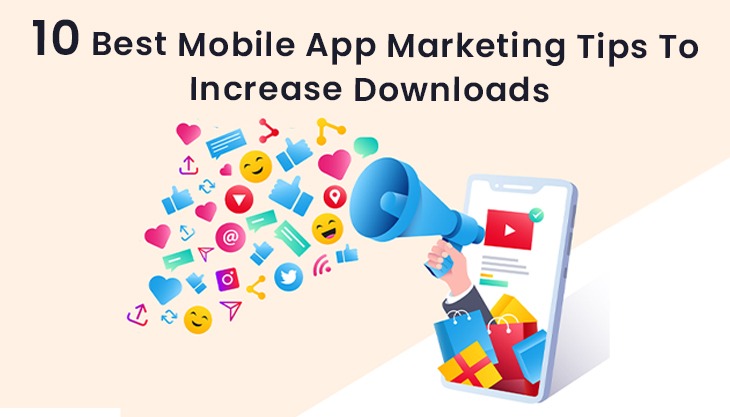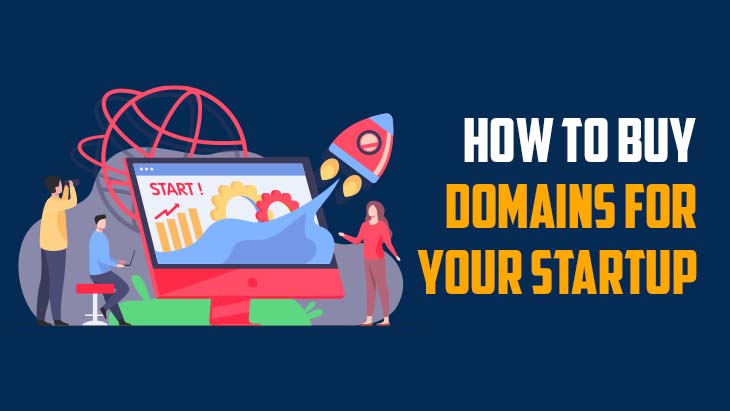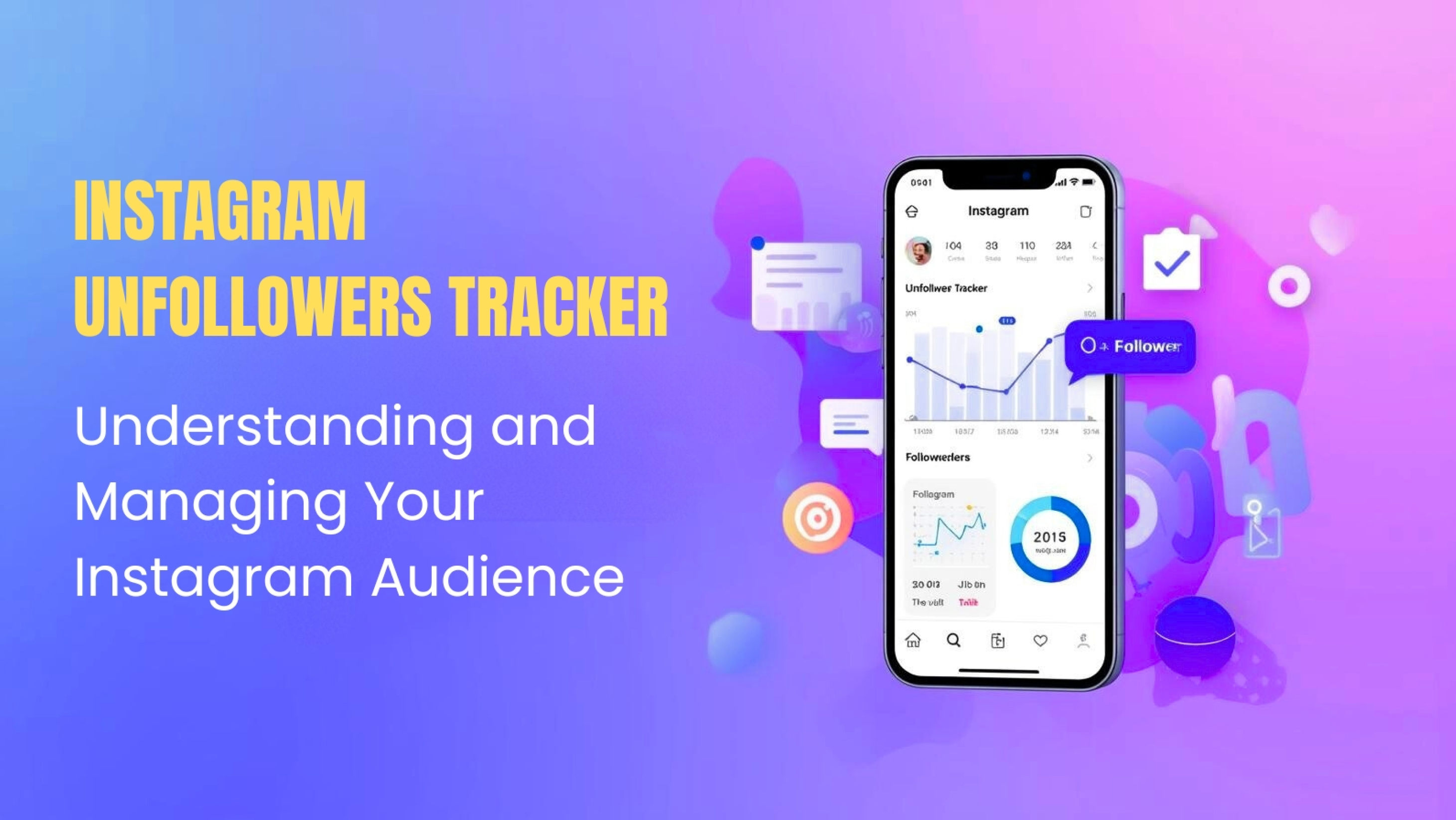Users have many alternatives for mobile shopping, entertainment, health, productivity, money, and other services, with almost 4 million applications accessible in the Apple App Store and the Google Play Store. As more applications hit the market, it's more vital than ever for small company owners and marketers to develop marketing strategies tailored to their mobile apps.
All it takes is a little traction for your App to become more visible and more users to discover and use it. So, how can you differentiate your software in an increasingly saturated market?
Mobile App Marketing encompasses a wide range of marketing efforts used to generate app downloads, engage mobile users, and retain those who have already downloaded an app.
This article will demonstrate what any firm or entrepreneur building an app should do at each stage of designing, releasing, and expanding a mobile app's audience. This article splits into the sequential steps of developing and launching an app.
During the three-time periods indicated below, each of these steps for mobile app marketing may complete in the same order:
- Pre-launch
- Launch
- Post-launch
What Is Exactly Mobile App Marketing And How Does It Work?
The app shops have nearly 4 million apps. Being lost in the app throng is unavoidable when the number of users is high enough. However, you haven't invested so much time, effort, and money on your App that it eventually vanishes.
As a result, you must begin taking steps to raise public awareness and reach out to individuals. As a result, we now have mobile app marketing.
The process of bridging the gap between your App and the individuals who need it is mobile app marketing. In other words, mobile app marketing assists you in bringing your App closer to your target audience so that you may make both profits from the connection.
10 Best Mobile App Marketing Tips To Increase Downloads
The tips show the three primary stages of the App's launch.
1) Select a well-designed app icon.
Visual signals influence consumer behavior. As a result, you should not add your app icon at the last minute. Make your App's symbol aesthetically appealing because it is the first thing a potential client sees when visiting an app store.
The logo you choose should be instantly recognizable and visually appealing. It must be a clear reflection of your brand as well as the objective of the App. In other words, your symbol should offer people a good sense of what they'll get when they download and start your program.
2) Make optimizing your software for the app store a high priority.
Most marketers are acquainted with SEO, but app developers who want more downloads need to learn about app store optimization (ASO).
While the two are comparable, ASO is intentions to increase your App's visibility in the marketplace.
The keywords you include in your App's title and description are essential things you can optimize. Use Google's AdWords keyword tool or a keyword tracker like Sensor Tower or App Radar to find the most relevant search keywords.
Categories: Choose your types correctly and strategically when submitting your App to an app store. Make sure you choose a class that is related to your App yet not overcrowded.
Downloads of apps: The number of users that download your App will impact your total rating.
Positive feedback: As your App receives more positive comments, it will be rated higher, automatically increasing download numbers. Prompting in-app reviews at key moments might help enhance them.
Consider your target audience's location and customize your app description to those locations. It might include changing your app store description into another language or choosing relevant and acceptable graphics for that location.
Using an App: The number of individuals who use your App, as well as the percentage of people who download it and subsequently delete it, influence its rating. So make sure you interact with your app users frequently.
Social proof: The popularity of the App on social media may influence its ranking. Create a separate social media account for your App or include it in the postings of your company.
3) Establish a website and a blog.
Creating a great app requires more than effective mobile app marketing; it must also be easily accessible. According to marketing guru Neil Patel, connecting your App to a website and blog might help you increase its reach and better target your potential consumers.
People generally resort to the web first to look for solutions to their difficulties. If you don't have visibility on search engines, you're missing out on a big chunk of your audience, whether they're searching for assistance with shopping, scheduling, productivity, or entertainment.
You may create an SEO-friendly website that complements the content in your app store listing. Consider putting a blog on your website to show off different App applications and assist you in attracting customers who are looking for information on topics connected to your services.
4) Make a demonstration video.
Not everyone will grasp all of your App's advantages simply by reading a brief description or looking at a few screenshots. Creating a sample video is another approach to promote your software and increase downloads.
Make a 30-second film that explains what, how, and why your software works. Put a particular emphasis on usability and your product's most popular features. Share your video on your website and social media networks, and don't forget to add it to your app store listing after it's finished.
5) Using attribution tools and analytics, analyze and measure
You can get the most out of your marketing efforts by tracking and attribution downloads so you can learn about and invest in the most profitable channels while making necessary changes to the ones that aren't.
You may correlate app installation to a specific ad type, target demographic, or platform using a mobile attribution tool, allowing you to improve your marketing efforts. Three popular mobile attribution systems are Adjust, AppsFlyer, and Kochava.
6) Make use of mobile communication channels.
Another option is to connect directly with the existing consumers via mobile. Mobile-specific channels allow you to engage your customers with a personalized message at the right time, whether it's through in-app messaging or push notifications.
Consider pointing a new feature you've added or offering recommendations in a difficult-to-navigate part of the software. Current users can be encouraged to promote your App on social media, suggest it to a friend, or offer feedback in the app store via in-app messaging and push notifications. These are great ways to keep people interested in your program while promoting it and giving it the support it needs to go viral.
7) Make use of the App's built-in tracking.
The information you get from your current users may help you improve your product and marketing efforts to increase app downloads and engagement.
Using in-app monitoring, you may obtain a better knowledge of your users' behavior and preferences. Is your software set to be removed at a specific time? What is the average number of times and length of time that a user logs in? Is there anything that seems to be more popular than others? Is there anything specific in terms of usability that you need to address?
You may utilize several in-app tracking technologies. Most of them begin with installing a software development kit (SDK) that allows you to connect to your app data. Many include custom tagging and behavior monitoring to provide the data you need to optimize the user experience and increase downloads.
8) Create deep relationships in your App.
Another strategy for increasing app downloads is to include deep links in your App that allow consumers to enter the mobile experience rapidly. Companies like Branch and Kochava provide this service, allowing for a more seamless transition from the internet to mobile. It improves your mobile App's exposure and accessibility to users regardless of the platform they choose to find you. They can also help you track data to observe where and how people engage with your App.
9) Take advantage of social media to disseminate information.
Because social media has over 3.5 billion users, it's critical to advertising your App on at least one of these channels. According to Mobile App Daily, over 70% of internet businesses utilize social media to mobile market apps. But where do you even begin?
The first step is to identify your target audience. You might wish to market your App on LinkedIn or Twitter if other companies or industry professionals are your target audience.
Individual consumers who have indicated an interest in products or services similar to yours, on the other hand, maybe located on Facebook and Instagram.
Then, in social media campaigns, you may utilize hashtags to build pre-launch excitement, raise brand awareness, or highlight new and improved features.
Here Is A List Of What Else You Could Do:
* Utilize a combination of sponsored articles and promoted posts on Mobile-friendly Facebook pages.
* Promoted tweets on Twitter can help you get more people to download your App.
* Investigate influencer marketing, especially on sites like Instagram and Snapchat.
* Run competitions to encourage users to download your App.
* Encourage users to create content to demonstrate the use of your product.
* Utilize forums such as Quora and Reddit to establish oneself as a niche authority.
10) Email marketing.
While several methods for promoting a digital product or service, email marketing remains the most effective. According to one recent research, email marketing offers a $51 average return on investment for every $1 invested.
After you've established a website and blog for your App, you can gather emails from interested prospects by embedding a sign-up form or using a landing page. You may continue to engage those prospects by sharing material from your blog or relevant articles until they convert and properly onboard them with a welcome email series. You may anticipate a good conversion rate if you handle email marketing intelligently.
Why Should You Employ A Digital Marketing Company?
Several paths may take various steps to achieve the three primary aims listed. While you may not require all services from a third party or all these services for your company, they do include items like:
1. Designing A Website
2. Optimization of a website
3. Optimization of Content
4. Curation of content
5. Development of Apps
6. Search Engine Optimization (SEO)
7. Marketing on Social Media
8. Integration and Mobile Marketing
9. Ad placement on the internet
10. Marketing on Multiple Platforms
11. Marketing via email
12. Branding on the Internet
13. Reporting on the Return on Investment (ROI) of Digital Strategies and Tactics
These are just a few of the reasons why you would hire an outside marketing firm. It's critical to look at what an outside firm creates and distributes online before deciding to work with them.
You know your company and brand better than anyone else, and you don't want to risk having false information created on your behalf. Even if the incorrect data was an honest error, it hurts the bottom line of 88 percent of all businesses.
However, the value of digital outsourcing projects is so great that experts predict that digital agencies in the UK to increase by 30% in 2014—so finding a balance is critical.
To Conclude
The most successful mobile app advice is that engagement is more critical than downloads.
You can force people to download your applications, but you can't force them to utilize them.
However, the actual engagement will come from the originality and ingenuity you put into your App. If those elements are missing, all marketing efforts would be futile.
















Post Comments